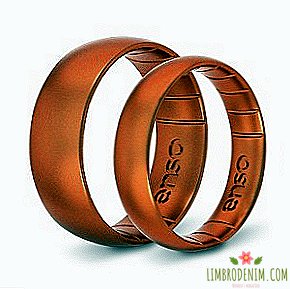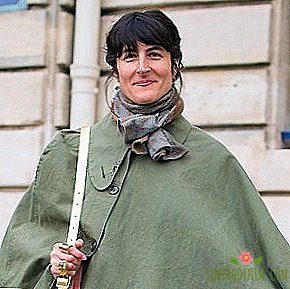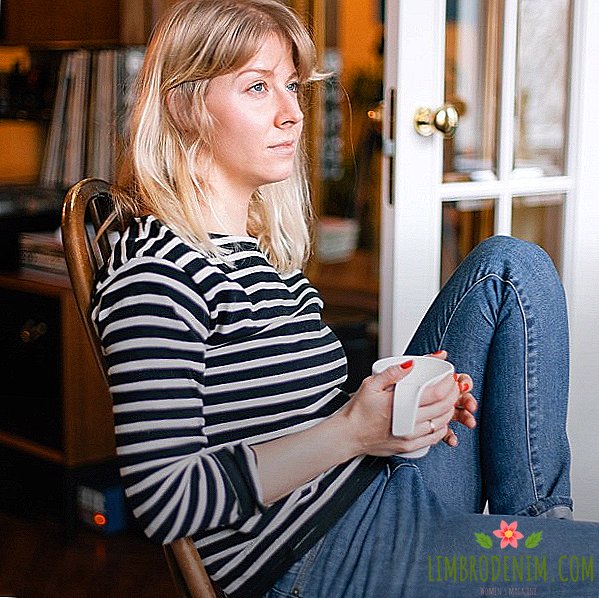What you need to know about natural decorative cosmetics
Text: Alina Khlebnikova, Beauty Pie
For several years in a row The share of natural cosmetics in the beauty industry is steadily increasing, and according to forecasts, by 2018 the organic market volume should at least double - and this leaves no possibility to ignore it. One of the driving forces of its development is the transition of many consumers to mineral decorative cosmetics, but it’s not just her.

Not all, on which it is written "mineral", has a natural origin. Almost every product from the line, for example, Maybelline contains minerals such as mica or oxides of titanium, zinc and iron, as they are concentrated sources of pigments that give products a variety of colors. When minerals, popularized by brands like Jane Iredale and bareMinerals, firmly strengthened their trend positions, the mass market, of course, did not miss the opportunity to catch up with the outgoing train. The principal difference between the “mineral powder” L'Oréal and its competitors from the more “natural” producers lies in the ingredients that were deliberately excluded from the latter: preservatives, parabens, petroleum products, synthetic dyes and fragrances. All of the above substances are common allergens, and cosmetics without their presence does not irritate even the most sensitive skin - this is how it differs from “normal”.
In addition to the fact that brands of natural cosmetics take care of our health with you, they are often as serious about the state of the environment. Virtually no eco-company is testing their final products on animals, many of them create funds to support manufacturers of cosmetic ingredients (mainly farmers from different plantations in developing countries) and do everything possible to reduce the consumption of packaging material. Recycled plastic cans and bottles have long been considered the industry standard, and one of the latest techniques was the manufacture of reusable cases with replaceable modules that can be easily replaced with new ones when the rouge or lipstick is finished.

At the mention of natural cosmetics there is an image of a store with a heavy smell of incense.

As in the case of minerals, as soon as initiatives of some cosmetic brands for environmental protection became popular and received press coverage, only the lazy people did not put the word "organic" on their labels along with the badge of an unknown certificate. Unfortunately, there are no legal norms that could prohibit companies from engaging in such independent activities, and it becomes difficult to understand what is really organic and what it pretends to be.
In addition, for some manufacturers, the pursuit of organic ingredients becomes an end in itself, while sacrificing convenience, efficiency and ease of use of the product. Therefore, often at the mention of natural cosmetics in the head images of shops with posters of Buddha and heavy fragrances of incense arise, rather than high-quality, beautiful and lasting makeup, which you can do. Fortunately, there are many brands whose products are both natural and effective: these are Aveda, bareMinerals, Dr. Hauschka, Inika, Jane Iredale, Origins, Pür Minerals and others. Moreover, every year new brands enter the market, wishing to lure new customers to the cosmetic world.

The niche of luxury organics was almost empty for a long time, until the Danish Kirsten Kier Weiss launched a cosmetics brand using only natural ingredients, which makeup artists could equally well have used on the covers of fashion magazines and girls at home. Kirsten, who has been a make-up artist for more than 20 years and knows a lot about make-up, has never seen any sense in lines created just for the eco-certification badge to flaunt on the packaging. Therefore, she rejected the compromises and created cosmetics with the use of natural and organic ingredients not to the detriment of its quality and beauty of packaging (by the way, it was created by Mark Atlan, who invented the bottle of COMME des GARÇONS 2).
The challenge, according to Kirsten, was that working with natural ingredients is a lot like winemaking - the various properties of the final product are determined by the characteristics of the harvest of a particular season. Because of this, from year to year shades of rouge or lipstick can vary greatly. This fact in itself may not be a huge drawback, however, if the buyer finds that his favorite brilliance is discontinued due to a shortage of organic roses, he will most likely not wait for a new collection, but buy a similar product from a competitor . Therefore, the main strength of the Kjaer Weis team is precisely to find ways to keep colors and textures more or less constant.
Often, the ecobrand color palette is poorer than that of the same MAC or Bobbi Brown, but such tools are also easy to mix with each other or to misuse. Karim Sattar, chief makeup artist Dr. Hauschka recommends using dark eyeshadow to turn ordinary mascara into waterproof: if you put a little shadow on top of the first layer of ink, you can safely go swimming in the pool or at sea. In general, experimenting with natural cosmetics is just as exciting and not scary as it is with the usual one, but in order to further lower the entry threshold, we decided to suggest some worthy tools that should be paid attention to.










